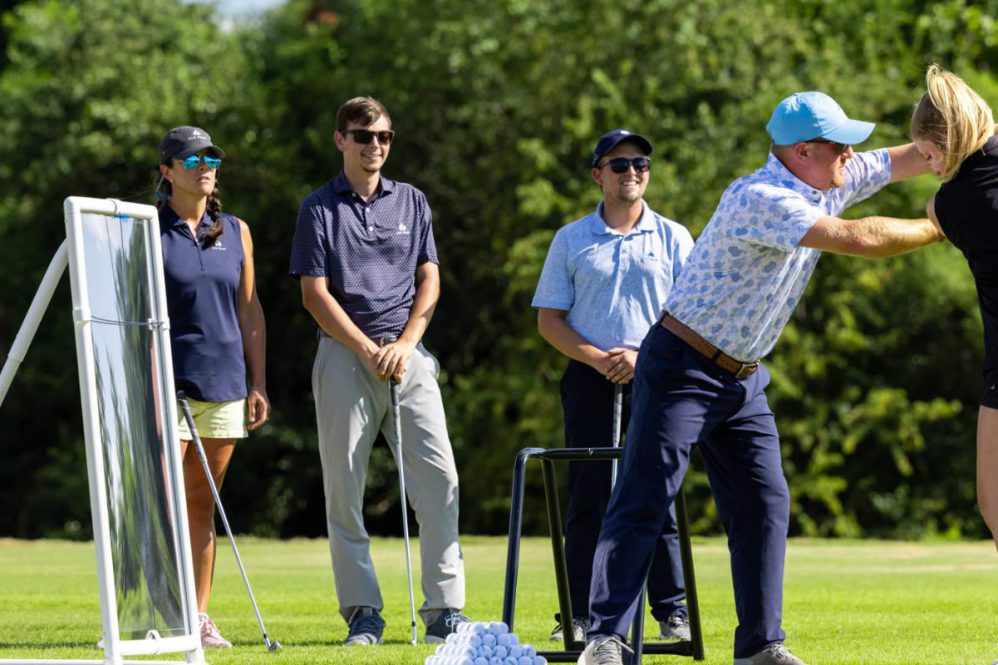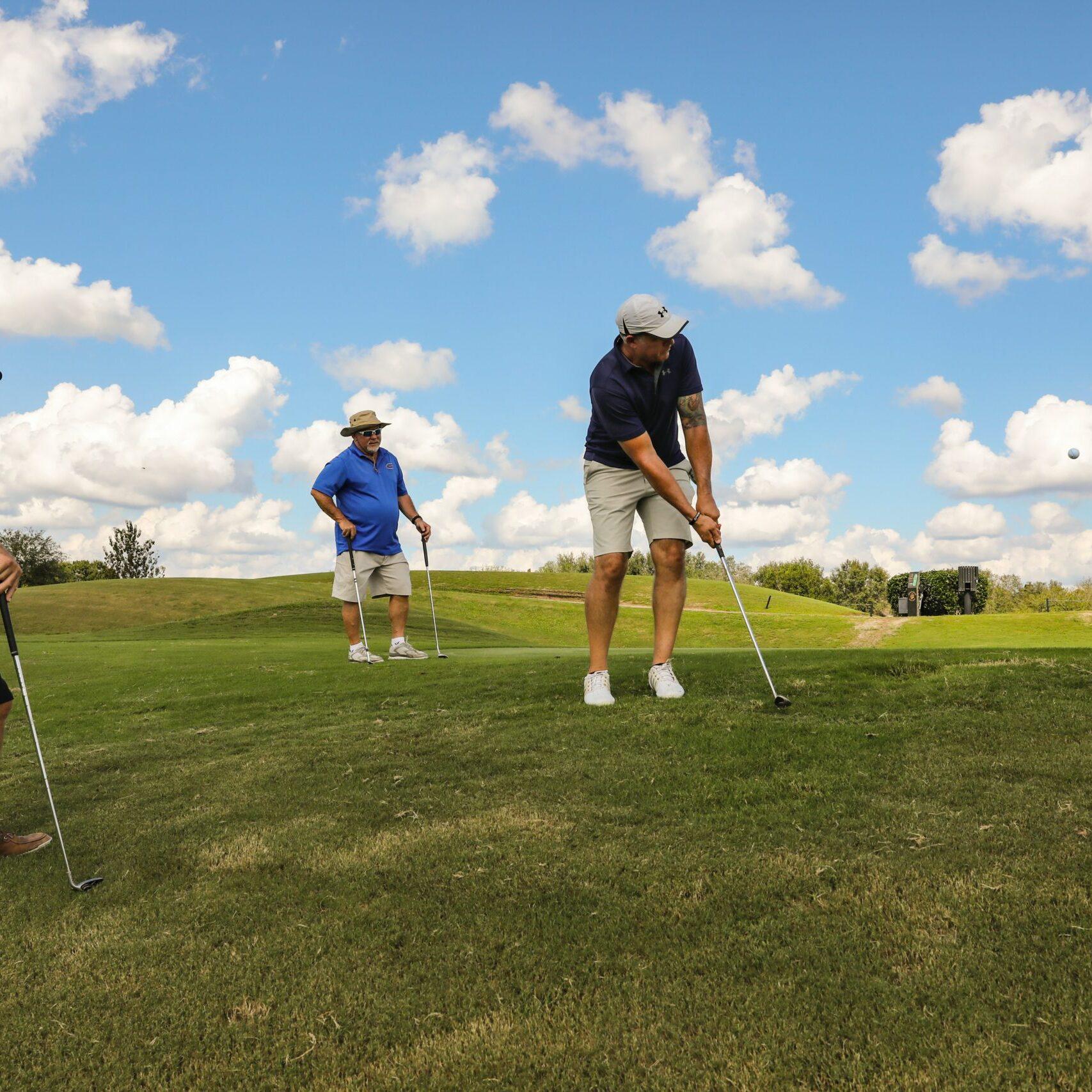In the pursuit of golfing excellence, the mastery of refined techniques becomes paramount. This comprehensive guide delves into the advanced strategies and nuanced approaches employed by proficient golfers, transcending rudimentary instruction. It unravels the intricacies of expert green reading, strategic tee shot placement, and astute course management, empowering golfers to elevate their performance. Furthermore, the article explores the significance of psychological factors in decision-making and sheds light on the art of shot shaping, enabling golfers to manipulate ball trajectory and spin for optimal results. By incorporating these refined techniques, golfers can refine their accuracy, minimize stroke count, and attain golfing excellence. This guide serves as an invaluable resource for golfers seeking to elevate their proficiency, providing practical insights into the subtle yet impactful techniques that distinguish skilled players.
Advanced Techniques for Optimal Performance on the Greens
Expert green reading is an art form that seasoned golfers master through dedicated practice and keen observation. They meticulously analyze green contours, slope, and grain direction to accurately gauge putt speed and line. This refined technique enables them to consistently sink putts from various distances and challenging angles.
Putting Techniques
Reading the green: Observe the green’s slope, contours, and undulations.
Aiming the putter: Use a visual target to establish a straight line to the hole.
Controlling speed: Consider factors like distance, green speed, and wind.
Striking the ball: Focus on a smooth, pendulum-like motion, keeping the clubface square.
Strategic Tee Shot Placement
Strategic tee shot placement is a crucial component of course management. Skilled golfers evaluate the layout of each hole, considering factors such as hazards, fairway width, and wind direction. They aim to position their drive in optimal locations that provide them with the best opportunities to attack the green and score well.
Course Management Strategies: Shot Shaping
Manipulating ball trajectory and spin is a valuable skill for golfers. By altering the angle of attack and clubface, they can create draws and fades, which enables them to shape their shots around obstacles, control distance, and achieve desired landing areas. Shot shaping enhances creativity and versatility on the course.
| Shot Type | Description | Use Cases |
|—|—|—|
| Draw | A curved shot that travels from right to left (for right-handed golfers) | Avoiding bunkers or trees on the right side of the fairway |
| Fade | A curved shot that travels from left to right | Holding a line over water hazards or narrow fairways |

Mastering Strategic Tee Shot Placement
Effective tee shot placement is a cornerstone of strategic golf play. It sets the foundation for the subsequent approach shots and can significantly impact the overall score. Seasoned golfers carefully consider various factors when choosing their tee shot location, including:
- Wind direction and speed: Understanding the prevailing wind conditions can help golfers select a club that will provide the appropriate trajectory and distance. A tailwind, for instance, allows golfers to hit the ball farther, while a crosswind requires adjustments to account for side spin.
- Course layout and hazards: Strategically placed hazards, such as bunkers, trees, and water obstacles, influence tee shot decisions. Golfers must assess the risks and rewards of each potential landing area and select a safe yet advantageous position.
- Approach angle to the green: The angle from which the golfer will approach the green after the tee shot plays a crucial role in club selection. A tee shot that lands in the rough or on the wrong side of the fairway can make it difficult to hit the green in regulation.
By considering these factors, golfers can enhance their tee shot accuracy, reduce their scores, and gain a competitive edge on the course. The following table provides a summary of key tee shot placement strategies:
| Tee Shot Placement Strategy | Benefits |
|—|—|
| Aiming for the center of the fairway | Provides the greatest margin of error and reduces the likelihood of penalty shots. |
| Playing to a specific target | Allows golfers to shape their shot and hit it to a desired landing area, even in challenging conditions. |
| Using the hole’s natural contours | Can help golfers gain an advantage by bouncing the ball into the desired area or avoiding obstacles. |
The Art of Astute Course Management
Mastering the Course: An Essential Skill for Golfing Excellence
Navigating the complexities of a golf course requires an astute understanding of course management strategies. Skilled golfers can anticipate hazards, gauge wind conditions, and select the optimal clubs for each shot. By reading the course layout thoroughly, they can plot their path to the green, minimizing risks and maximizing opportunities.
Examining the Course Layout: Hazards and Wind Impacts
The course layout presents various obstacles, requiring golfers to assess the severity and placement of hazards. Strategically placed bunkers, water hazards, and rough can disrupt ball trajectory and hinder progress. Additionally, wind conditions can profoundly influence club selection and shot trajectory, as it can alter the ball’s flight path and distance. Skilled golfers continuously monitor the course and wind conditions to adjust their approach accordingly.
Shot Selection and Club Choice: Optimizing Performance
Based on their understanding of the course and wind impacts, skilled golfers select the appropriate clubs for their shots. Each club varies in its distance and trajectory, allowing golfers to select the optimal club for the desired shot shape and desired landing zone. The optimal club selection empowers them to hit greens in regulation, avoid hazards, and minimize risk, ultimately resulting in lower scores.
Leveraging Psychological Factors for Enhanced Decision-Making
Psychological elements play a pivotal role in optimizing golf performance by influencing decision-making and overall strategy. Mastering the mental aspects of the game empowers golfers with greater control over their emotions and enables them to approach each shot with a clear and focused mind.
One key factor is self-awareness, the ability to acknowledge and understand one’s strengths and weaknesses. By objectively assessing their abilities, golfers can tailor their shot selection and course strategy to maximize their potential. They should also cultivate positive thinking, maintaining a belief in their abilities even when facing challenges. Positive affirmations can help reinforce a mindset of confidence and determination.
Furthermore, concentration is paramount in executing precise shots and managing the course effectively. Maintaining focus throughout the round allows golfers to avoid distractions and execute their shots with precision. Practicing mindfulness techniques and implementing a pre-shot routine can enhance concentration and improve consistency. By integrating psychological strategies into their gameplay, golfers unlock a powerful tool that complements their technical skills and elevates their overall performance on the golf course.
Shot Shaping: Manipulating Trajectory and Spin
The art of shot shaping lies in manipulating the ball’s trajectory and spin to optimize performance. Skilled golfers employ various techniques to achieve this precision, enabling them to maneuver around obstacles, stop the ball on a dime, or create draw or fade shots. By mastering these techniques, golfers can conquer challenging courses and enhance their overall game.
Control Trajectory:
Loft: The club’s loft directly influences the ball’s launch angle. Higher loft clubs impart greater height, while lower loft clubs produce flatter trajectories.
Ball Position: Adjusting the ball position in the stance can alter the clubface angle at impact, thereby affecting the ball’s flight path.
Swing Path: The angle of the club’s swing path, relative to the target line, determines whether the ball curves left or right.
Generate Spin:
Angle of Attack: Striking the ball with a descending club head imparts backspin, creating a steeper landing angle and increased stopping power.
Clubface Orientation: An open clubface promotes draw shots with right-to-left curvature, while a closed clubface produces fade shots with left-to-right movement.
High-Friction Grooves:** Modern golf clubs feature grooves on the clubface that increase friction and create additional spin on impact.
| Shot Type | Trajectory | Spin | Result |
|---|---|---|---|
| Draw | Curved right-to-left | Increased | Accuracy around obstacles, ability to stop on downslope |
| Fade | Curved left-to-right | Reduced | Overcomes wind, increased distance |
| High Ball | Steep launch angle | Backspin | Carries over obstacles, quick stopping power |
| Low Ball | Flat launch angle | Less backspin | Pierces wind, increased rollout |
the pursuit of golfing excellence requires the mastery of refined techniques that extend beyond fundamental instruction. This article has elucidated the intricate strategies employed by skilled golfers, highlighting the importance of expert green reading, strategic tee shot placement, and astute course management. By incorporating these techniques, golfers can refine their accuracy, minimize stroke count, and navigate the complexities of the game with greater proficiency. Additionally, the article has emphasized the influence of psychological factors in decision-making and provided insights into the art of shot shaping, empowering golfers to manipulate ball trajectory and spin for optimal results. As golfers embrace these advanced techniques, they unlock the potential to elevate their game to new heights, achieving golfing proficiency that transcends mere instruction and approaches the realm of artistry.





